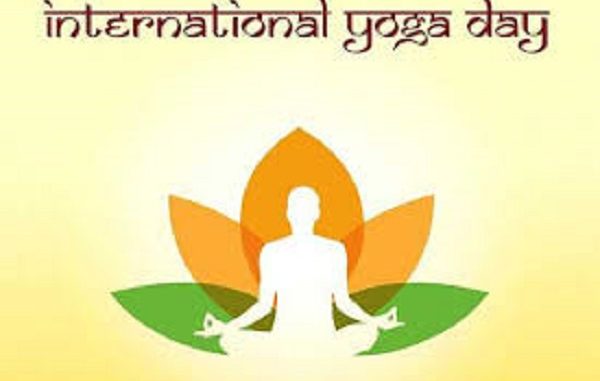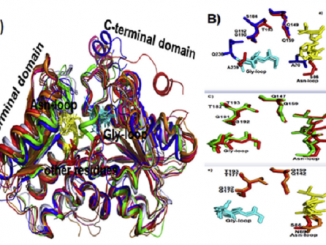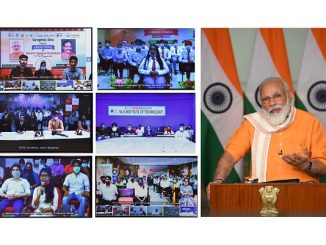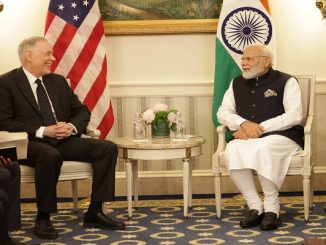
June 19: Yoga embodies unity of mind and body through action, restraint, fulfilment and harmony between man and nature. It is a holistic approach towards health and well-being. Dr. Deepika Kothari explained this while speaking about the first yoga-sutra – ‘Atha Yoga Anushasanam’. Taking part in a webinar organised by Nehru Science Centre (NSC), Mumbai, on Thursday (June 18, 2020), the yoga researcher explained the significance of this ancient discipline which has gained increased importance at a time when the world is fighting the COVID-19 pandemic. Dr. Rajvi Mehta, an exponent of the Iyengar Yogashraya, the other speaker in the webinar pointed out the symbolism of yoga as found in India’s ancient temple art and architecture. The discussions were moderated by Shri Shivaprasad Khened, Director, NSC.
Dr. Kothari threw light on the historicity of yoga, starting with Patanjali who had compiled, coded and systematised this science which is known as ‘Yoga Sutra’ today. Under the banner of Vishuddhi Films, her documentary film ‘History of Yoga – The Path of my Ancestors’, has traced the evolution of yoga over a period of 6,000 years. The film ends at the time when Swami Vivekananda takes it to the West and finds a scientific explanation. Yoga Shastra was intertwined in the religious beliefs of Hinduism, Jainism, Buddhism, Sufism and various other doctrines, says the yoga researcher.
Dr. Kothari said, Rig Veda, which is regarded as the most ancient literature of the world, elucidated two important aspects of Yoga Sutra – ‘Tapa’ and ‘Dhyana’. ‘Tapa’ means to control the flickering mind and sensory organs as it serves the purpose of creativity and acquiring knowledge, whereas ‘Dhyana’ serves as a tool to acquire knowledge. Explaining what knowledge was sought for in ancient times, Dr. Kothari explains, Knowledge is to know who I am and also about the outer world, that is, reality. ‘Samyama’, another important term in Yoga Sutra signifies a combination of Pratyahara (withdrawal of the senses), Dharana (concentration) and Dhyana (meditation) – which are tools used for gaining knowledge of things around and within. Hence, it is a tool for the human body to function effectively and acquire knowledge. Patanjali also wrote about two aspects of ‘Yama’ and ‘Niyama’ that help to fortify human cells and therefore trains us in self-discipline in day-to-day life.
These yoga tools, deeply enrooted in Indian culture, have gained increased significance in the present day as it is of help to fight the current pandemic induced crisis, opined the yoga researcher. Explaining further, she said. “In the context of the ongoing coronavirus pandemic, we have kept distance from each other. In Indian culture, there was always a practice of keeping a distance from each other vis-à-vis western countries where hugging and embracing each other is very common. In India, this practice of respectfully keeping a distance from each other is an illustration of the ‘yamas’ and ‘niyamas’ practised since time immemorial. Similarly, ‘Sauch’/’Suchita’(cleanliness) is another vital aspect to be focussed upon during the pandemic.”
Elucidating the connection between Yoga Shastra and India’s first civilization – the urban settlement of Indus Valley, the yoga scholar said, in the planned and systematic urban life of Indus Valley, people hardly got ill. This is corroborated by the fact that excavations in the Indus Valley site could not unearth any diseased skeleton. Certain practices are continuing in our lives since those days, like that of cleaning and washing every day, having satwik food, etc.
Dr. Kothari said, we Indians, practise the ‘yamas’ and ‘niyamas’ in our day-to-day lives, without consciously knowing about it. “With a little more dedicated effort, we can enhance our capabilities by practising the five yamas and five niyamas”, she feels. Dr. Kothari says, apart from the virus induced pandemic, corruption is another negativity ailing today’s society in general.
Historical documents of foreign travellers from west and middle-east who came to India since ancient times, have recorded that all sections of Indians were truthful, trustworthy and honest people. According to Yogacharya Iyengar, when India was subjected to foreign aggression and invasion, the yogis and siddhas migrated to the jungles and the masses lost connection with them. It disturbed the societal set-up and high values held by the common people slowly eroded, leading to corruption and negativities in the country. The guru-shishya parampara which was held in a high pedestal and largely contributed towards maintaining high values in the society, slowly degraded and caused a loss of values.
A ray of hope in these difficult times lie with our reverence for the knowledge we have inherited and lifestyle which is largely guided by it, feels Dr. Rajvi Mehta. Today, yoga is practised in more than 100 countries. Yoga gurus like BKS Iyengar had exposed world citizens to the wonders of yoga since the last century. Dr. Mehta feels that the observation of June 21 as International Day of Yoga by UN after Prime Minister Narendra Modi proposed it in his UNGA speech in 2014 has restored the faith and reverence for yoga which did slide down in the post-colonial years.
Speaking about what attracted the global citizens, especially those in the western countries to the ancient Indian art, Dr. Mehta says, they first started learning the yoga postures which greatly benefitted them. This, then, pulled them to acquire a deeper understanding of the Yoga Shastra which is a philosophy deeply embedded in Indian culture. The yogic postures or ‘asanas’ have been depicted in Indian art and architecture, said the yoga exponent. In the context of lockdown which has been a necessity to control the pandemic and flatten the curve, Dr. Mehta says, people have been benefitted by practising yoga which helps the mind to draw itself away from outward attractions and concentrate inwards.
Yoga contributes towards maintaining balance and alignment of body and mind, explained Dr. Mehta. In Bhagavad Gita, it is said – ‘Yoga is equanimity’ and Patanjali explained that ‘Yoga is the restraint of the fluctuations of the consciousness’.
Dr. Rajvi Mehta of Patanjali Yogashraya mentioned certain postures (asanas) which have been helpful to cope with difficult times of disease outbreak. Tadasana (Keeping the centre of the crown of the head, throat and the perineum in one line to steady mind, eyes and consciousness), Hamsasana and Mayurasana and Vashishthasana are among the asanas which have a major effect on calming the mind and body. So does Marichyasana, which is a unique twisting of the body, rarely found in any form of exercise and which not only exercises the spine, but also has effect on the respiratory, cardiovascular, digestive and excretory systems. Mulabandhasana, Paripurna Matsyendrasana, Baddha Konasana, Garbha Pindasana, Padmasana similarly heal the mind and body. These were illustrated in an exhibition organized by the Science Centre under the National Council of Science Museums under the Ministry of Culture. The webinar can be watched below.
Source: PIB
Disclaimer: We donot claim that the images used as part of the news published are always owned by us. From time to time, we use images sourced as part of news or any related images or representations. Kindly take a look at our image usage policy on how we select the image that are used as part of the news.


